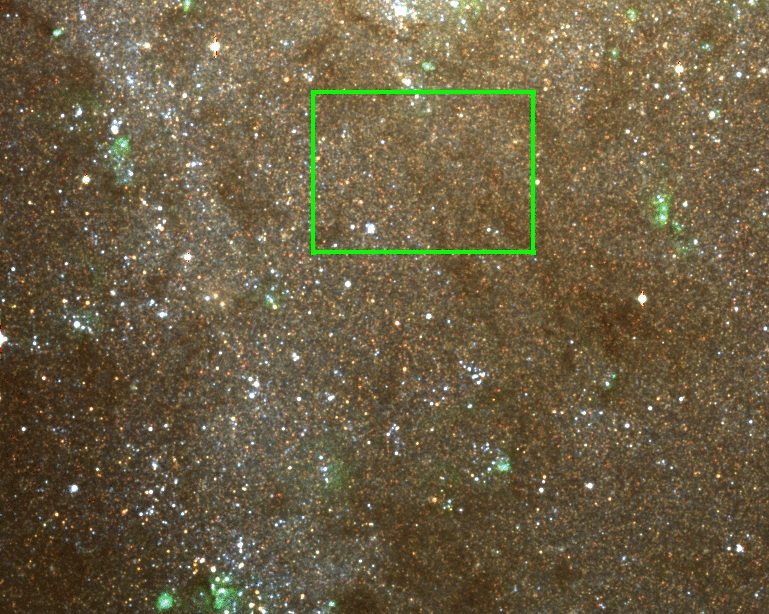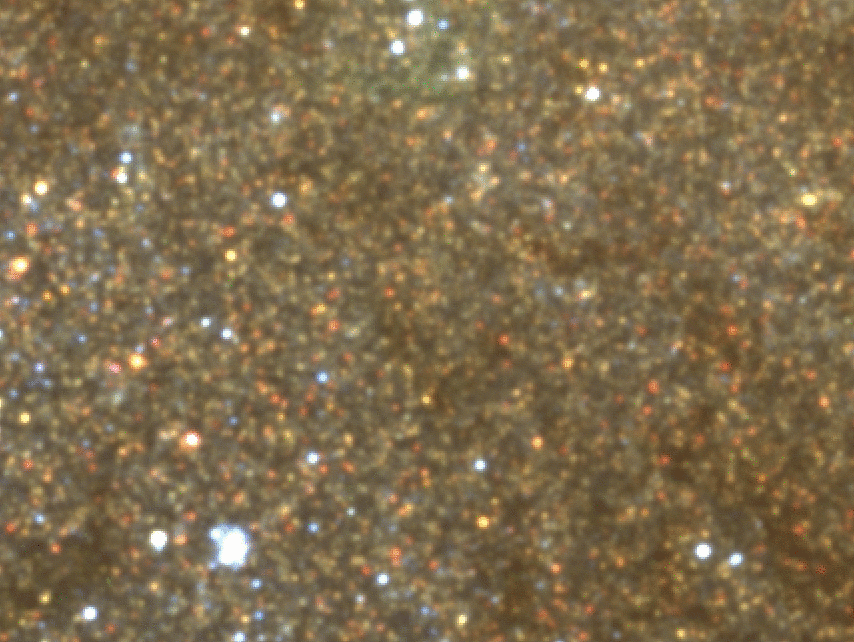Variable Stars in M33
These stars are not twinkling - they're physically varying in brightness. The following movie of a portion of the beautiful, nearby spiral galaxy M33 is composed of 6 observations taken over 2 years (displayed as a repeating animated gif). Note the quantity of variables (particularly among red stars). We usually think of galaxies and the stars they contain as constant entities, but many stars can change in temperature and brightness over fairly short time-scales that are easily observable to a human. This is especially true for the brightest stars, which are the ones you can see most easily in a distant galaxy. When images of a galaxy taken over the course of a few years are displayed as an animation, the variable stars are immediately apparent - the galaxy appears to be seething with them! In the movie below the green regions are H-alpha emission nebulae. A few of the brightest stars appear to be varying wildly (a yellow-white star at the upper left in particular) - these stars are actually saturated in the image, their variation is an artifact.

The green box on the above movie shows the field of view of the following zoomed in movie. Most of the stars are long period variable red giants or asymptotic giant branch stars (these are the red variables). The yellower variables are Cepheids - well known for their period-luminosity relation which can be exploited to determine the distance to galaxies such as this one. In fact, our measurement of the Hubble Constant, and by inference, the age of the Universe comes from finding and studying these yellow variables in distant galaxies. The typical period for a Cepheid is between 2 and about 40 days, so even if we were to make a movie with observations spanning only a month the Cepheids would still appear quite variable. To see the longer period red variables you need to span at least a year.



